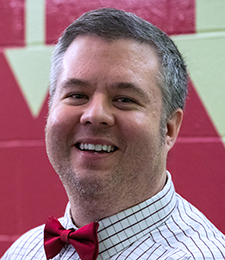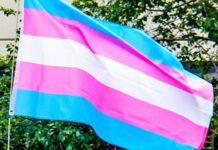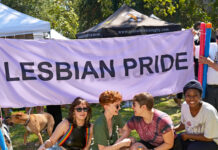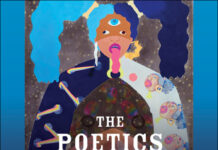One of the best ways to measure societal change is to look at trends over time.
In “Minnesota 2022 LGBTQ Aging Needs Assessment Report,” a group of researchers from the University of Minnesota and Rainbow Health surveyed a group of 354 LGBTQ adults over the age of 50 about their concerns and the perceptions of the state’s aging LGBTQ community. The 2022 survey follows two earlier surveys, each conducted a decade apart, in 2002 and 2012.
Rajean Moone, faculty director of the University of Minnesota’s Long-Term Care Administration, was part of a research team of 10 who conducted the study. He said that the report’s multi-decade breadth helps to illustrate how societal changes and community work impact the the concerns and perceptions of the state’s aging LGBTQ community. Many of the survey’s respondents, who were recruited from past participation or through a number of community organizations, indicated that significant changes — like laws supporting marriage equality and shifting perceptions about older LGBTQ adults — have had a positive impact on their mental health. Some state concern that recent anti-gay legislation may be reversing that trend.
When analyzed over time, Moone said, he and his colleagues still see reason for optimism. “Maybe it’s not one step forward, two steps back. It’s more like baby steps forward. The net is the same result: It is still forward movement.”
Earlier this month, Moone and I spoke about his study’s history, highlights of its findings and ways that change impacts the mental health and well-being of LGBTQ older adults.
MinnPost: What inspired you to conduct this survey?
Rajean Moone: About a decade ago I was serving on the board of a nonprofit organization that merged with Rainbow Health. At that time we were interested in learning more about the experiences of older LGBTQ Minnesotans. A small group of researchers, including Cathy Croghan, Andrea Olson and me came together in 2012 to replicate a study that had been done 10 years before called the “2002 Needs Assessment.”
A decade later, we wanted to update this study. We wondered, “Have things changed? We’ve had marriage equality, all kinds of changes in LGBTQ policies and rights.” And so, in 2022, Rainbow Health and the U of M partnered to do another wave of the study.
MinnPost: Were there elements of your survey results that you expected to change since it was last conducted?
RM: I did think there would be changes. A lot has occurred in the last decade as it relates to LGBTQ rights. In 2012, one of the interesting things occurring in Minnesota at that time was the proposal to create a constitutional amendment that defined marriage as between opposite-sex individuals. That may have influenced the results of the 2012 study. Same-sex marriage became legal in the state the next year. We knew there would be some change as a result of that.
MinnPost: Were there other cultural issues that you thought might play a role in the way your respondents answered your questions?
RM: With this study there were also other, larger societal influences that played a role in responses. We have a pandemic, which is a very different thing to be occurring in our communities, a very different influencer. We knew we would have to look at the data through the lens of living through a pandemic.
MinnPost: What were some of the most surprising responses in your survey?
RM: One of the interesting questions we asked was, “What is your preference for who delivers services to you?” This is important when we are thinking about services for older adults and their families and caregivers.
We asked this question: “Indicate your preference for accessing nine different categories for services.” They can choose for each category “LGBTQ-specific,” “LGBTQ-welcoming” or “no preference.” Similarly to a decade ago, in eight out of nine cases, LGBTQ older adults in our survey preferred “LGBTQ-welcoming” to “LGBTQ-only.”
This shows that the majority of our respondents don’t want to go to the “LGBTQ Senior Center.” They want to go to the senior center down the street, where they are near their neighbors and friends.
MinnPost: What can service providers take away from this response?
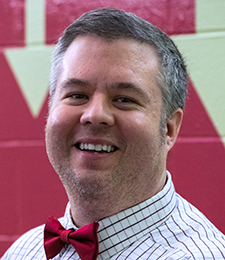
Rajean Moone
RM: It’s important that all providers know how to meet the needs of the LGBTQ community. We want to make sure that senior centers in Chaska or Fridley or Duluth are LGBTQ-welcoming. This should be a universal thing.
MinnPost: Is there more to be learned from the fact that most of your respondents said they preferred to receive services from LGBTQ-friendly providers, not LGBTQ-only providers?
RM: Many different metro areas around the country have what’s known as a “gay neighborhood,” whether it’s Halsted in Chicago or West Hollywood in Los Angeles. That’s not true in the Twin Cities. Here LGBTQ people are diffused throughout the community. A lot of people like to say Minneapolis is where most LGBTQ people live, but that’s not true. Any one group is going to be the largest in Minneapolis when you look at the numbers, but there are still plenty of LGBTQ people in communities all over the state. If I live in Roseville and grew up in Roseville, I want to stay in Roseville. I don’t want to have to move to the “gay neighborhood” to get services. I want to stay in in my community and get services there.
MinnPost: What about changes? What are some of the biggest shifts that occurred over the last 10 years?
RM: One fairly significant shift comes from the question: “Do you believe that you would receive safe service from your provider if they knew you were LGBTQ?” Back in the 2012 study, 80 percent of respondents said they were unsure that their provider would provide safe service if they knew they were LGBTQ. In 2002, that number was 90 percent. In 2022, that number had dropped to 15 percent.
MinnPost: That’s a big change. Where do you think that comes from?
RM: A lot is related to changes in larger societal attitudes. LGBTQ people have become much more recognized. They have more rights. At the same time I also think there are generational shifts. Ten years ago, the majority of older adults were members of what people call the “Greatest Generation.” Now that group is the Baby Boomers. They are a very different cohort. Baby Boomers naturally tend to be more self-assured. They demand more rights. So that’s not that surprising. What is surprising was that significant shift in provider trust. I was not prepared to see that number.
MinnPost: That shift may represent progress in human rights. Do you see it as a signifier of other social change on the horizon?
RM: Being LGBTQ is not as hidden as it was 10 years ago. But there are still a number of threats. In 2022, the ALCU did a study that looked at anti-LGBTQ legislation introduced at the state level. In 2018 there were 41 bills that were categorized as anti-LGBTQ. Just six months into 2022 there have been 238 anti-LGBTQ bills introduced at the state level. While there have been a lot of strides, there has also been a lot of backlash.
MinnPost: Does backlash like this have an impact on the mental health of LGBTQ older adults?
RM: We have to remember that LGBTQ older adults carry with them the weight of growing up in a society where just being LGBTQ was considered immoral, illegal or a medical diagnosis. For instance, it wasn’t until the mid-1990s until the American Psychiatric Association removed homosexuality from its list of mental disorders. That kind of history is what many LGBTQ older adults bring with them when they go to seek services, that history of providers thinking of them as sick, immoral or illegal.
MinnPost: With aging often comes the issue of caregiving. Did your survey find that LGBTQ older adults have different caregiving responsibilities than members of the general population?
RM: LGBTQ older adults are nearly twice as likely to be a caregiver, less likely to have a caregiver and more likely to live alone.
Twenty-three percent of the respondents in the study were currently providing care for another family member. When you look at the numbers for the general population of older Minnesotans, only 14 percent said they were providing care to someone else. That’s a fairly big difference. Sometimes there are contextual factors behind that. Family members might say, “She never had a child so she can help Mom and Dad,” or, “They don’t have other family commitments so they are available.” The truth could be that they never fully came out or had a relationship because of what they experienced.
MinnPost: What did your survey find about the family lives of LGBTQ older adults?
RM: We all have biological families, people we are related to because of blood or marriage. We also have chosen families, the people we hang out with on Friday nights or Saturdays. Our chosen family can include biological family members or our neighbors or people we went to school with.
Seventy percent of respondents in our study said they had a chosen family. What we find from broader literature on the LGBTQ experience is that older LGBTQ adults tend to rely more on their chosen families than on their biological family.
MinnPost: Does this reliance on chosen vs. biological family have an impact on LGBTQ adults as they age and become more dependent for care?
RM: In our current study, the largest population of respondents was older gay men. Forty-two percent of respondents said they lived alone. In the general population of older Minnesotans, 29 percent of older adults live alone.
There are two things to think about with this result. One is there has been an increasing awareness of what are known as “solo agers.” They are more at risk for significant mental health issues like isolation and depression. For example, older gay men grew up during the AIDS epidemic of the 1980s and 1990s, when they lost a number of their social-support networks. Isolation has been deemed a public health crisis in the United States. It is exacerbated in the LGBTQ community.
MinnPost: Beyond the potential for aging in isolation, are there other troubling factors that emerged from your research?
RM: Half of our respondents reported that they have personally experienced harassment, discrimination, abuse and violence because of their sexual orientation. Over half said they’d experienced harassment, discrimination, abuse and violence because of their gender identity. And the majority of respondents said they knew someone who had experienced harassment, abuse or violence because of their sexual orientation, and 75 percent said they knew someone who’d experienced violence, harassment or abuse because of their gender identity. We know that these experiences have an impact our mental health.
Then there’s the whole concept of internalized homophobia. We have an example of an older gentleman who went to a restaurant with his partner. The waitress said that he and his partner looked so much alike that they must be brothers. He didn’t want to say they were partners because he was afraid of what she might do to his food. So he didn’t say anything. That is an example of internalized homophobia.
MinnPost: How can instances of internalized homophobia have an impact on a person’s mental health?
RM: These kinds of experiences only further a sense of social isolation. When you experience something like that you don’t want to go back to that restaurant. If you’ve had that feeling of discomfort, that feeling of shame perpetuates itself.
MinnPost: Your study’s finding that a large majority of respondents now feel like they are getting safe service from their care providers is significant. How are providers making it clear that they are LGBTQ-friendly?
RM: More and more, when you go into a health care provider, you’ll see signals that they are a welcoming. You’ll see a rainbow flag sticker, or their brochure will include LGBTQ-affirming statements. You are seeing more and more of this, and this is good news for older LGBTQ adults. Even some senior-care communities are now celebrating Pride month.

